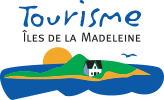

Baie du portage is a marshy branch of Havre-aux-Basques Bay, but its circumference is protected by a wooded area. Since there is no longer any human activity in this sector, it is an excellent rest and nesting site for waterfowl. The woods around the pond are mostly conifers, but there are a few deciduous trees and small creeks that create a perfect environment for several forest species. We suggest that you begin by looking over the pond while walking along the road leading to a promontory overlooking the pond. This is private property, and you are asked to respect it. You can then continue your walk along the forest road that runs beside Portage Bay (Baie du Portage).
A little farther on, closer to Bassin, you can stop on Chemin de la Rivière. In this sector you will be able to observe forest species at the beginning of the road and aquatic species at the other end. This site was chosen by an American academic to carry out a study of the north-south migration of warblers.
Walking in the forest and on the edge of the pond.
Hundreds of Brant (Branta bernicla) visit Baie du Portage every spring. They share the space with waterfowl that nest here: Greater Scaup (Aythya marila), Ring-necked Duck (Aythya collaris), Gadwall (Anas strepera), Northern Pintail (Anas acuta), Mallard (Anas platyrhynchos) and American Wigeon (Anas Americana). Other species are also often present, such as the Pied-billed Grebe (Podilymbus podiceps), American Bittern (Botaurus lentiginosus) and Great Blue Heron (Ardia herodias). If you continue your exploration along the path beside the pond, you will find several species of passerines in the forested area on the other side : warblers, buntings, wrens, chickadees, kinglets. The Northern Harrier (Circus cyaneus), Rough-legged Hawk (Buteo lagopus), Sharp-shinned Hawk (Accipiter striatus) and Merlin (Falco columbarius) are often sighted here.
118 different bird species have been counted along Chemin de la Rivière. These are basically all the forest species that you might observe in the first part, including 20 species of warblers and 10 species of buntings. Several aquatic species can be seen at the end of the road. Wood Stork (Mycteria americana) and Osprey (Pandion haliaetus) have been observed here. The return trip is a few kilometres, but it is definitely worth taking the time.
When you arrive at Havre-Aubert Island on Route 199, you follow Chemin du Portage and Chemin des Bouchard to get to Portage Bay (Baie du Portage). The last part of this road is gravel, and not good for cars during the spring thaw. You should park your car on the side of the road and walk the rest.
Chemin de la Rivière can be reached via Chemin du Bassin, about two kilometers after the intersection on the south side of the road. Park your car at the beginning of this road and walk to the end.